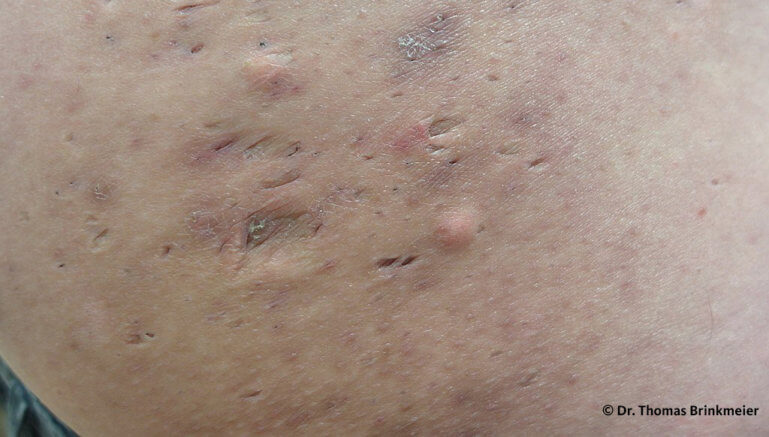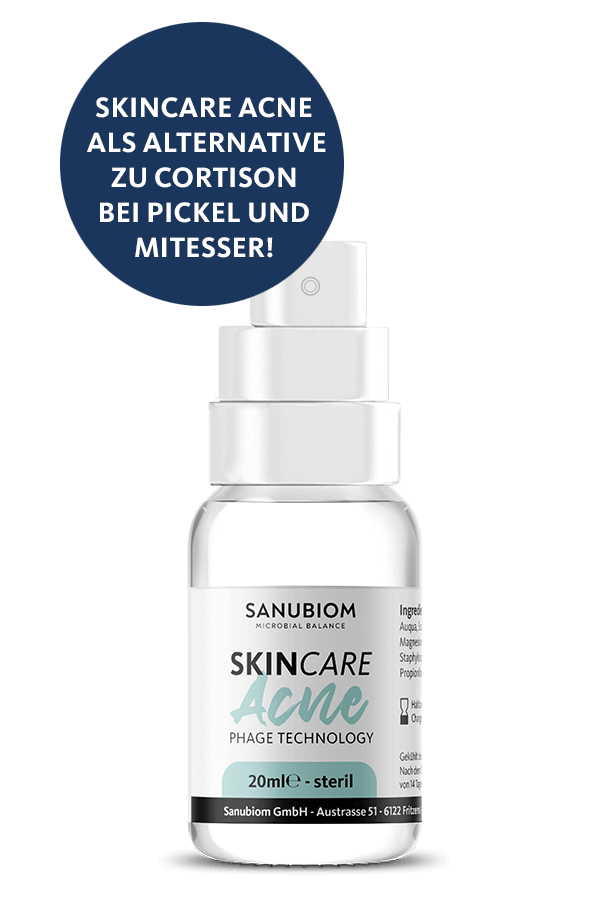Acne

Acne inversa is a chronic skin disease that is also known as hidradenitis suppurativa. It usually occurs in the armpits, groin, buttocks and chest areas. This condition mainly affects adults and can be very unpleasant as it causes painful abscesses, pimples and lumps. This article explains the causes, symptoms, complications and treatment options for acne inversa.
The most important facts in brief:
The exact causes of acne inversa are not yet fully known, but it is assumed that genetic and hormonal factors play a role. It is also suspected that an impaired immune system, smoking and obesity can increase the risk.
In addition to the factors already mentioned, such as genetic and hormonal causes, the development of acne inversa can also be promoted by certain environmental factors and behaviors. These include, among others:
It is important to note that the exact causes of acne inversa are not yet fully understood and that the disease can progress differently for each person affected.
In the beginning, small painful lumps form in the skin or subcutaneous tissue. Even one to two days before these lumps appear, those affected notice a burning sensation and a warming of the corresponding areas of skin. The lump usually results in three scenarios: The lump heals, it persists or it transforms into an abscess. These abscesses can break through to the outside or fuse in depth. If the abscess breaks through, a watery-bloody or purulent fluid comes out which also smells unpleasant. These areas are usually very painful.
Initially, the inflammation of the hair follicles often resolves itself, but as the disease progresses, it can recur and become chronic. Bulge-like scars and lumps can develop in the skin and subcutaneous tissue, and fistulas and inflammatory ducts can form.
Acne inversa occurs particularly where there are a lot of sebaceous and sweat glands, these are areas of skin that lie in folds. These regions include, among others: Armpits, groin, anal and genital region, thighs and also under the female breast. On the other hand, acne inversa rarely occurs on the face, back or hairy scalp.
According to Hurley, acne inversa is divided into three stages:
Acne inversa is a considerable psychological burden for those affected, as the skin changes are often experienced as stigmatizing. One consequence of this can be social withdrawal and isolation. Depression is also more common among patients.
Long-term and very pronounced symptoms can lead to long-term consequences and various complications. Some of them are:
The accompanying diseases of acne inversa include, among others:
First of all, the doctor makes a diagnosis through a physical examination and finds the skin changes on the typical parts of the body. In addition, a medical history is taken to clarify how long the symptoms have been present, how frequently they occur, what risk factors are present and whether there are similar symptoms in the family.
Sometimes further examinations are also necessary to determine the severity of the disease:
To date, there is no treatment for the cause of acne inversa, but attempts are made to alleviate the symptoms as much as possible and prevent the disease from progressing. The first thing to do is to avoid certain trigger factors. These include:

SKINCARE ACNE
Probiotic skin protection SkinCare Acne with Phage Technology.
Your skin comes to rest.
The following non-surgical measures are available to alleviate the symptoms:
If inflammatory abscesses repeatedly develop in certain areas of the skin, they can be surgically removed. Acute abscesses can also be surgically opened and flushed. However, this results in extensive wound areas that take several weeks to heal. To prevent the recurrence of inflammation, the operation is combined with antibiotics or bacteriophages.
The cause of acne nvera cannot be completely cured, so it is only possible to combat the pain and consequences. SkinCare Acne can help to kill the bacteria that cause inflammation and acne-prone skin.
Since acne inversa cannot be cured, only the symptoms can be treated. Even if affected skin lesions are surgically removed, new abscesses and skin lesions can develop later.
There are certain trigger factors for acne inversa, including, among others: Obesity, smoking, stress and psychological strain.
If acne inversa is not treated, the disease can worsen and an extensive infestation with abscesses, fistulas and scar tissue can occur.
No, acne inversa is not contagious as it is a chronic inflammatory disease and is associated with a malfunction of the immune system.
Author: Martin Müller
“Various internal and external influences can cause our microbial balance to become unbalanced. Harmful bacteria get out of hand and skin irritations such as redness, itching and eczema are the result. “
Share post: